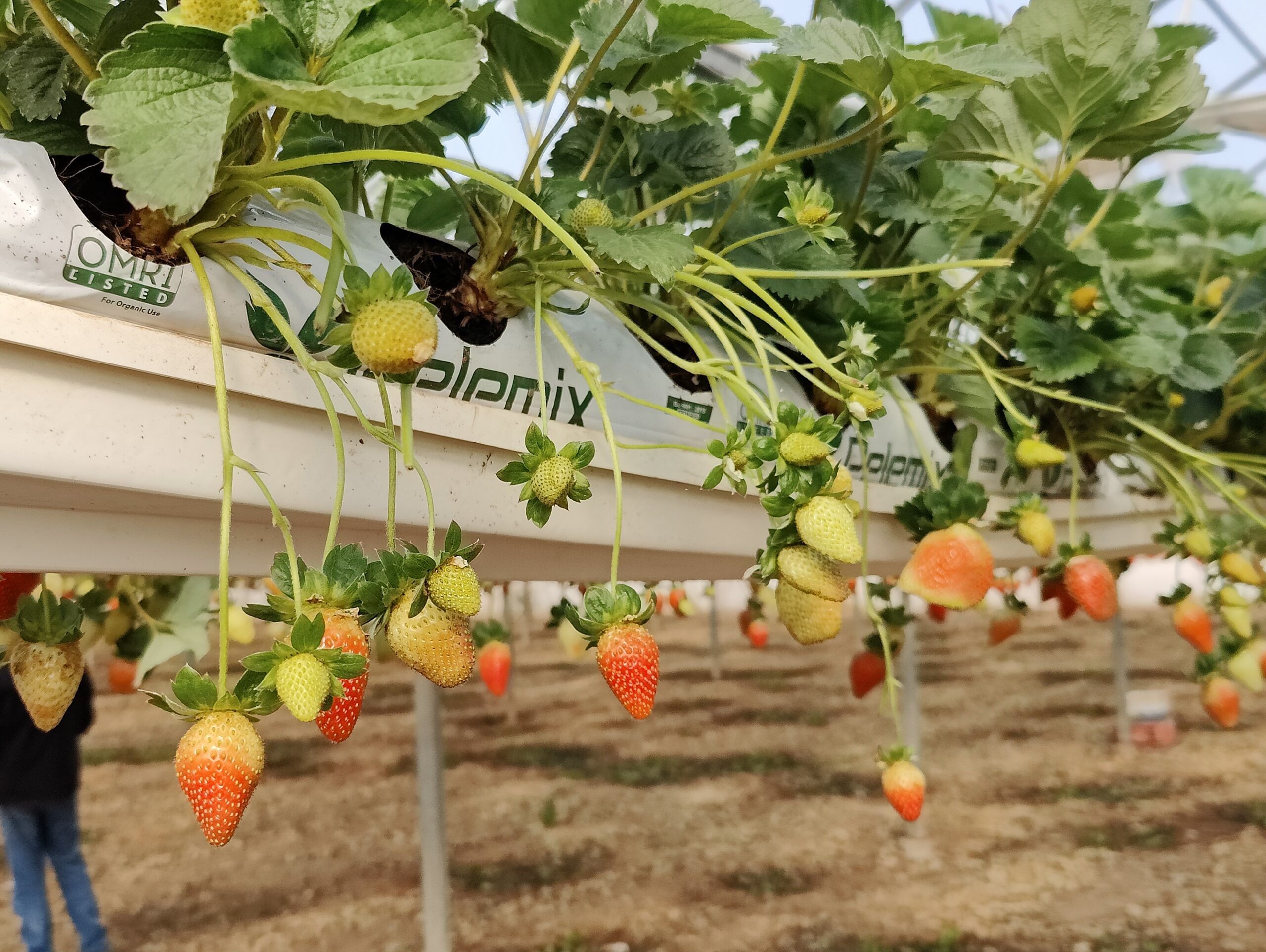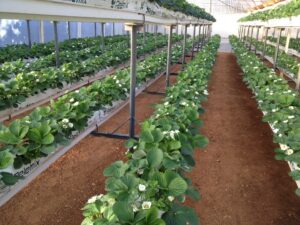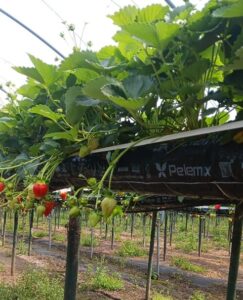Home » Beyond soil: the strawberry revolution

Strawberry cultivation is undergoing a transformative shift as growers increasingly abandon traditional soil farming in favor of soilless systems, particularly substrate channels and gutter cultivation. The results speak volumes: dramatically higher yields, accelerated crop turnover, and optimized resource utilization.
Compelling research demonstrates that strawberries cultivated in organic substrates such as coco coir or peat moss consistently outperform their soil-based counterparts in both fruit weight and overall quality. This superior performance stems from enhanced root-zone oxygenation and improved nutrient uptake efficiency (Miceli et al., 2008; Licastro et al., 2025). Israeli commercial growers report yield increases of up to 100% over equivalent growing areas when transitioning to soilless systems. 
The advantages extend beyond mere productivity. Soilless environments demonstrate remarkable uniformity, with significantly less fruit damage due to the elevated growing system that prevents fruit-ground contact and crops mature earlier, all of which are critical factors for meeting tight market windows and executing successful multi-harvest cycles. This predictability allows growers to better coordinate with distributors and retailers, reducing waste and maximizing profitability.
While initial capital investment for soilless infrastructure may exceed traditional methods, the long-term return on investment proves compelling. Growers experience significant reductions in labor costs, difficulties in picking, pesticide applications, and water usage, particularly when operating within Controlled Environment Agriculture (CEA) facilities. These sophisticated greenhouse systems enable precise control over environmental variables, including light intensity, humidity levels, and fertigation schedules—essentially delivering precision agriculture at commercial scale (Alavi et al., 2025).
The environmental benefits further strengthen the case for adoption. Recent life cycle assessments reveal that soilless strawberry production generates fewer carbon emissions per kilogram of fruit compared to conventional soil-based methods, especially when incorporating substrate reuse protocols (Licastro et al., 2025). This sustainability advantage positions growers favorably within increasingly environmentally conscious markets.

Soilless cultivation has evolved from an experimental technique to a mainstream commercial strategy. For growers seeking scalable, efficient production without the constraints of soil quality and availability, the evidence is clear: in modern strawberry agriculture, “soilless” truly means more.